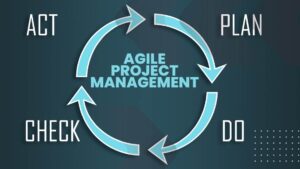In today’s fast-paced business landscape, effective project management plays a vital role in ensuring the success of any endeavor. One powerful tool that can significantly improve project management is the Work Breakdown Structure (WBS). By breaking down complex projects into smaller, manageable tasks, a WBS provides a clear roadmap for project teams, enhances collaboration, and helps deliver projects on time and within budget. In this article, we will explore how work breakdown structures can transform your business and take your project management capabilities to new heights.
Understanding Work Breakdown Structures (WBS)
A Work Breakdown Structure (WBS) is a hierarchical decomposition of a project into smaller, more manageable tasks. It provides a comprehensive overview of all the deliverables and activities required to complete the project successfully. The primary purpose of a WBS is to organize and define the work required for project execution, ensuring that all project components are accounted for.
Using a WBS in project management offers several benefits, including how to reduce the cost of a bad hire. It allows project teams to clearly understand the project’s scope, break it down into manageable chunks, and establish a logical sequence for task completion. This helps identify dependencies, estimate project timelines, and allocate resources efficiently. By having a well-defined WBS in place, project managers can avoid hiring the wrong people for the job and ultimately reduce the cost of a bad hire.

Components of a Work Breakdown Structure
A well-structured WBS consists of various components that work together to provide a comprehensive framework for project management. These components include:
Breaking down projects into smaller tasks
A key aspect of a WBS is breaking a project into smaller, more manageable tasks. Each task should be specific, measurable, achievable, relevant, and time-bound (SMART). By dividing the project into these smaller tasks, project teams can focus on individual components, ensuring better control and accountability.
Creating a hierarchical structure
A WBS typically follows a hierarchical structure, with the project goal or objective at the top level. This top-level objective is then broken down into sub-objectives, further decomposed into tasks, sub-tasks, and work packages. This hierarchical structure clearly explains the project’s organizational framework and the relationship between different components.
Defining deliverables and milestones
Within the WBS, each level represents a specific deliverable or milestone. These deliverables are the tangible outcomes of each project component and serve as checkpoints for progress tracking. Defining clear deliverables and milestones helps evaluate project performance, identify bottlenecks, and ensure timely completion.
Creating a Work Breakdown Structure
To create an effective WBS, certain steps need to be followed:
Identifying project objectives and scope
Before developing a WBS, it is crucial to define the project objectives and scope clearly. This involves understanding the desired outcomes, constraints, and success criteria. By comprehensively understanding the project’s goals, project teams can create a WBS that aligns with the desired outcomes.
Engaging the project team
Creating a WBS should be a collaborative effort involving the project team. Each team member brings their expertise and insights, contributing to a comprehensive breakdown of tasks. Engaging the project team also helps foster a sense of ownership and commitment to the project’s success.
Mapping tasks and dependencies
Once the project objectives are defined, the team can map tasks and their dependencies. This involves identifying the sequence in which tasks must be completed and understanding the relationships between different components. Mapping tasks and dependencies allow for efficient resource allocation and accurate project scheduling.
Allocating resources and estimating costs
With the tasks and dependencies mapped, the next step is to allocate resources and estimate costs for each component. This includes identifying the skills and expertise required for each task and assessing the associated costs. Organizations can better plan their budgets and ensure optimal resource allocation by having a clear understanding of resource requirements and costs.
Managing Projects with Work Breakdown Structures
Once the WBS is created, it becomes a valuable tool for managing projects effectively. Here’s how a WBS contributes to project management:
Tracking progress and monitoring deliverables
With a well-defined WBS, project teams can easily track the progress of each task and monitor the completion of deliverables. By comparing the actual progress against the planned schedule, teams can promptly identify any deviations and take corrective actions. This ensures that projects stay on track and deliverables are completed within the defined timelines.
Identifying potential risks and mitigations
By breaking down a project into smaller tasks, a WBS allows project teams to identify potential risks more effectively. Each task can be analyzed for possible risks, and appropriate mitigations can be planned. This proactive approach helps minimize the impact of risks and ensures smoother project execution.
Adjusting schedules and budgets
Inevitably, changes and adjustments are required during project execution. A WBS facilitates these adjustments by providing a clear understanding of the project components and their interdependencies. If a task needs to be rescheduled or the budget reallocated, the WBS allows project teams to make informed decisions quickly.
Enhancing Collaboration and Communication
In addition to its role in project management, a WBS enhances collaboration and communication within project teams. Here’s how:
Facilitating teamwork and coordination
A WBS provides a common framework for all team members to understand their roles and responsibilities. It promotes collaboration by clearly defining how different tasks are connected and how they contribute to the overall project objectives. This shared understanding enhances teamwork and coordination among project team members.
Promoting clarity and accountability
A WBS promotes clarity by breaking down a project into smaller tasks and ensures that each team member understands their specific responsibilities. This clarity reduces ambiguity and confusion, enhancing accountability for task completion. When everyone knows what is expected of them, it improves overall project performance.
Streamlining decision-making processes
Decision-making can be challenging in complex projects due to the many components and dependencies involved. A WBS simplifies decision-making by providing a visual representation of the project structure. This enables project teams to make informed decisions based on a clear understanding of the project’s components and their relationships.
Examples of Work Breakdown Structures
Work breakdown structures can be applied across various industries and project types. Here are a few examples:
Construction projects
A WBS can break down the project into phases such as site preparation, foundation, structural framework, electrical and plumbing, finishing, etc. Each phase can be divided into specific tasks, ensuring efficient project management and resource allocation.
Software development projects
A WBS can be used for software development projects to break down the project into stages such as requirements gathering, design, development, testing, and deployment. Each stage can then be divided into tasks and sub-tasks, facilitating effective project planning and execution.
Marketing campaigns
In marketing campaigns, a WBS can help break down the project into market research, target audience identification, messaging development, content creation, advertising channels, and campaign tracking. This breakdown ensures that each aspect of the campaign is well-defined and executed.
Integrating Work Breakdown Structures into Business Operations
Work breakdown structures can have a transformative impact on businesses when integrated into their operations. Here are some benefits:
Aligning projects with organizational goals
Organizations can use a WBS to ensure that their projects align with their strategic objectives. The hierarchical nature of the WBS allows for a clear understanding of how each project component contributes to the overall organizational goals. This alignment ensures that projects deliver tangible value to the business.
Improving project planning and execution
A well-developed WBS enhances project planning and execution by providing a structured framework. It helps identify potential risks, estimate resource requirements, and establish realistic project timelines. Projects will likely be completed on time and within budget with improved planning.
Enhancing efficiency and productivity
Work breakdown structures enable organizations to identify areas where efficiency can be improved. Breaking down projects into smaller tasks makes it easier to streamline processes, eliminate redundancies, and optimize resource allocation. This focus on efficiency leads to increased productivity and cost savings.
Overcoming Challenges in Implementing WBS
Implementing a WBS in business operations may come with certain challenges. Here are a few tips for overcoming them:
Resistance to change
Introducing a new project management approach like a WBS can face resistance from stakeholders accustomed to existing processes. To overcome this, it’s essential to communicate the benefits of the WBS and involve stakeholders in the process from the beginning. Demonstrating the value of the WBS through pilot projects can also help overcome resistance.
Balancing flexibility and structure
While a WBS provides a structured approach to project management, it is crucial to maintain a balance between structure and flexibility. Projects often evolve, and adjustments may be required. Building flexibility into the WBS allows for adaptations without compromising the overall project structure.
Ensuring effective stakeholder engagement
To create a successful WBS, engaging stakeholders at every stage is essential. Collaborate with key stakeholders to define project objectives, determine the appropriate level of detail in the WBS, and validate the breakdown of tasks. Involving stakeholders ensures that the WBS accurately reflects the project’s scope and requirements.
Conclusion
In conclusion, work breakdown structures (WBS) are powerful tools that can transform your business’s project management capabilities. A WBS provides clarity, enhances collaboration, and improves decision-making by breaking down complex projects into smaller, manageable tasks. Integrating a WBS into your business operations can align projects with organizational goals, improve efficiency, and deliver successful outcomes. Embrace the power of work breakdown structures and take your project management to new heights.
FAQs
Q: Can WBS be used in any industry?
A: Yes, the concept of a WBS can be applied to various industries and project types. It provides a structured approach to project management, ensuring clarity, accountability, and effective resource allocation.
Q: How can WBS improve project cost estimation?
A: By breaking down a project into smaller tasks, a WBS allows for more accurate cost estimation. Each task can be assigned a specific cost, and the cumulative costs provide a comprehensive view of the project’s budget requirements.
Q: Is it possible to modify a WBS during a project?
A: A WBS can be modified during a project if necessary. As projects evolve and new information becomes available, adjustments may be required. Documenting any changes made to the WBS and communicating them to the project team is important.
Q: What tools can help in creating and managing WBS?
A: There are several software tools available that can assist in creating and managing a WBS. Examples include project management software like Microsoft Project, Trello, Asana, and WBS-specific tools like Wrike and Smartsheet.
Q: How can WBS promote effective communication among team members?
A: A WBS promotes effective communication by visually representing the project’s structure and components. It ensures that everyone understands their roles and responsibilities, facilitates coordination, and communicates project progress and updates clearly.



